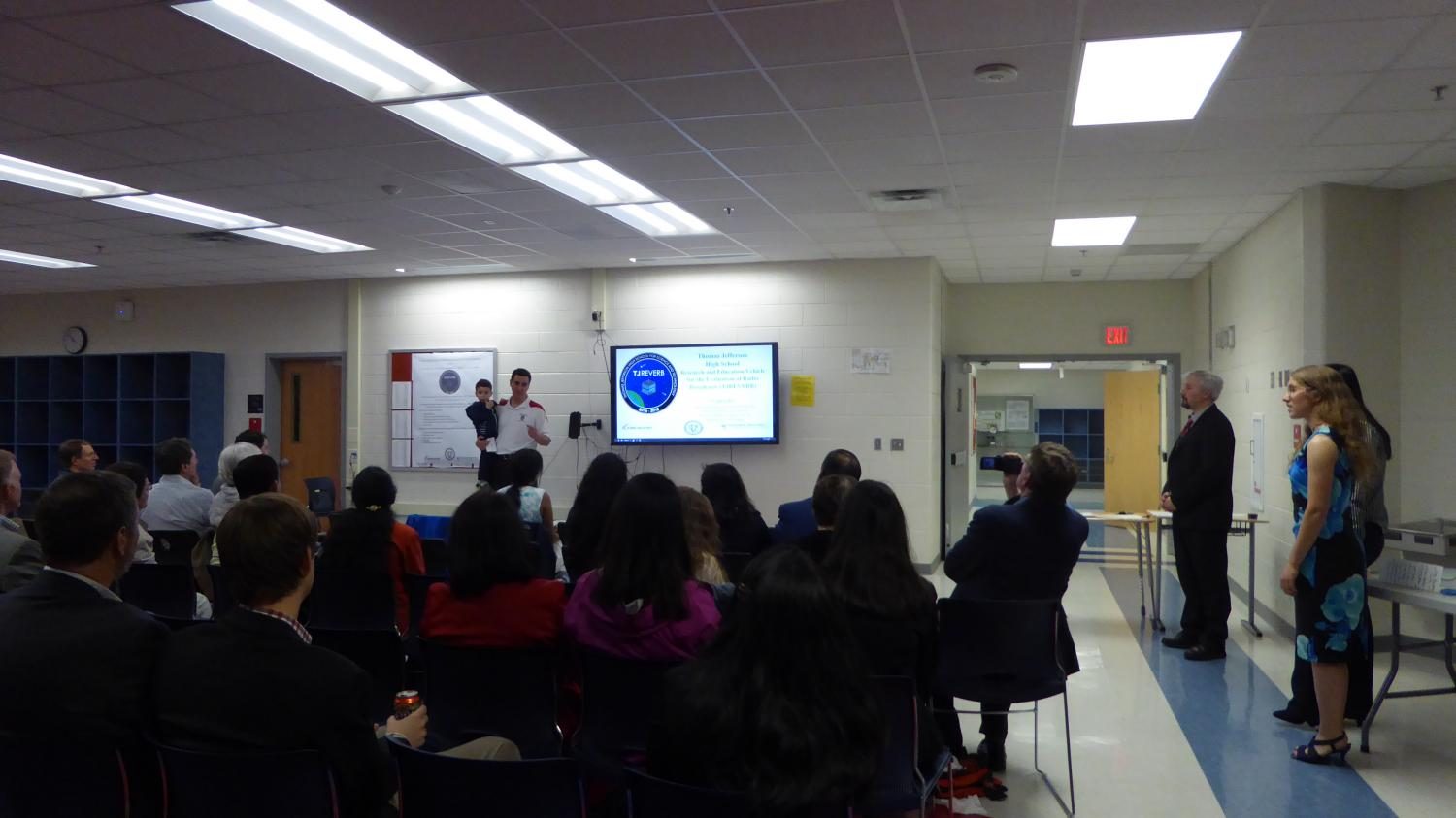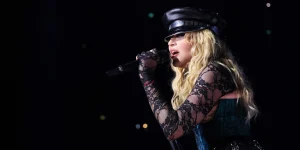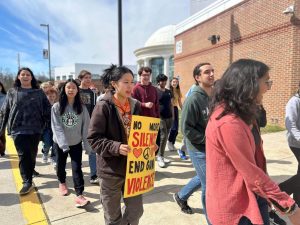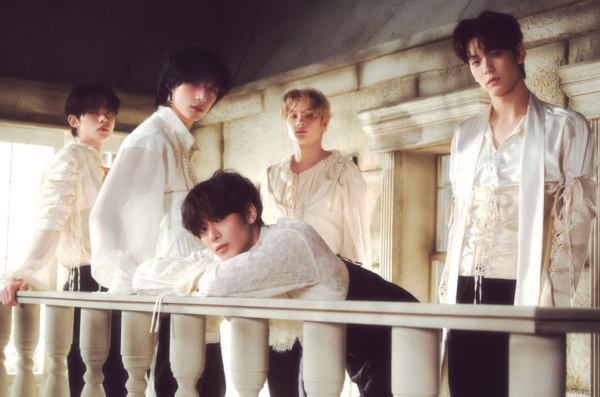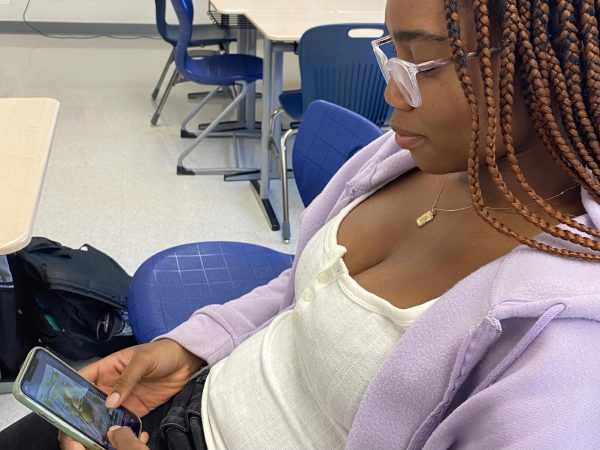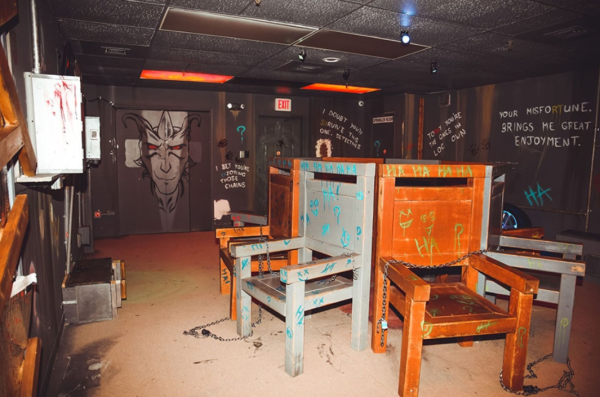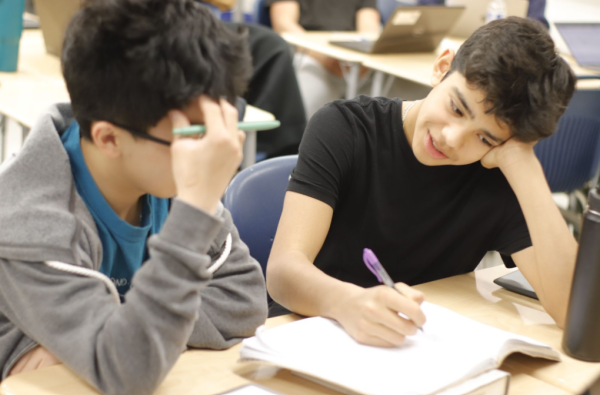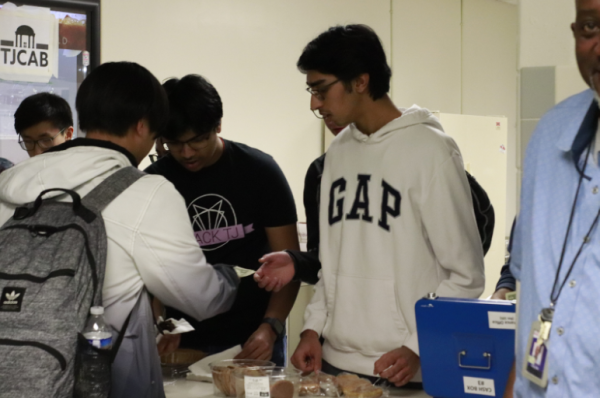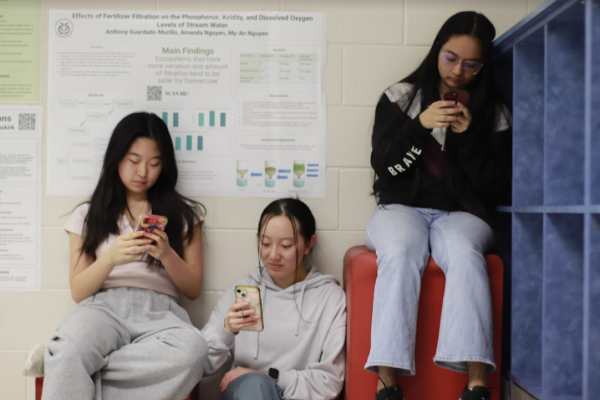Jefferson CubeSat holds kick-off event celebrating takeoff of space satellite project
Photo courtesy of Diana Zavela. Principal Evan Glazer introduces the CubeSat project at the team’s kick-off event. The event took place on April 22.
April 29, 2017
Launching a satellite into space – it’s a project that few high school students can imagine taking part in, yet the Jefferson CubeSat team is doing just that. On April 22, the CubeSat team held a kick-off event to spread the word on their project: the creation of a satellite destined for lunar orbit, slated to launch May 2018. They plan to build a 1-U CubeSat, which means that the satellite will be in the shape of a ten by ten by ten centimeter cube. The project is called Thomas Jefferson High School Research and Education Vehicle for the Evaluation of Radio Broadcasts (TJREVERB), and the goal of the mission is to conduct experiments on radio waves in space and to provide outreach to other schools that are interested in creating their own CubeSat.
The team has been working tirelessly on the CubeSat through the school year, and the project is being funded largely in part through the NASA CubeSat Launch Initiative grant. The team began to work toward winning the two-million dollar research grant in early October, enduring a process which included making presentations for a panel of industry engineers as well as writing a thirty-page research proposal.
“NASA got back to us [in] February notifying that we won the grant, and also that among 34 research institutions and universities that won the grant we were one of two high schools who won. [We] also manifested as ninth in priority on the grant out of 34,” senior Justin Zhou said.
Members of the CubeSat project are divided into teams, each focusing on a different aspect of the project. The teams include the CAD (computer aided design) team, the Thermal Design team, the Electronics team, the Communications team, the Outreach team, the Testing team and the Programming team.
“I don’t think that there’s ever been a coordinated effort like this in TJ history as far as an engineering project,” Zhou said. “Everything in Cubesat is interconnected in some way and we all work together as a team toward the one common goal, which is completing the satellite and launching it into orbit. Our team is about 90 people, so it’s probably the largest engineering project TJ students have ever coordinated.”
Much of the project is education-based, meaning that members of the project are actively working to educate other students on research in space. In order to do so, the project has been keeping careful documentation of each step of their process.
“Part of our NASA grant that we got was we promised to educate the people around us, like [elementary and middle] schools around us, and try to spread the word about the accessibility of space,” senior Thomas Baron said. “That’s what the outreach team is tasked with.”
One of the team’s main goals is to establish a sustainable space research program at TJ. They have focused on training underclassmen in order to allow the project to continue year after year, despite losing graduating team members each spring.
“We opened up an application process this December, what we want [is for] the CubeSat project to be a multi-year experience for our students. We’re basically requiring that most of our new admits have to be either freshmen or sophomores so they can spend a year or two learning from the upperclassmen who have more engineering know-how,” Zhou said. “They join [the] Outreach [team] in the beginning and they shadow the engineering teams and write up documentation on how the engineering processes [work]. By the time [the upperclassmen] leave TJ, there’ll be a whole new generation of students ready to keep working on the satellite.”
The CubeSat frequently makes use of lunch periods, eighth periods, and after school to meet and work on the project. So far, the team has drawn up precise plans for the design of the CubeSat.
“We work at pretty much all hours of the day. Thomas and I, back when the grant was getting written, would work three hours a day after school as well. We also come in when school’s off. We came in over spring break to continue working on the project,” Zhou said. “Pretty much whenever we have time. No time is off limits, really.”
In preparation to assemble the satellite, the team has been researching and experimenting to determine the ideal design. For example, the team has chosen magnetorquers as a method for manipulating the satellite in space. The system will use the magnetic field of the Earth to align the satellite.
“We are currently testing variations of magnetorquers, which are used to orient the Cubesat in low Earth orbit, to see which of the designs would be most efficient for the actual satellite,” senior and Power Management Team Lead Shrikant Mishra said.
At the CubeSat event, the team gave a presentation on the project’s mission and gave demonstrations.
“We even had a school board member, Ilryong Moon, a staffer from the office of congressman Gerry Conolly, and TJ’s board of supervisors representative Penny Gross in attendance. I’d estimate we had about 80 people, which was a great turnout,” senior and Project Coordinator Diana Zavela said.
Although there is much to be done until the team can launch their CubeSat into orbit, the team is making great strides in their goal of establishing a space program in the school.
“Our hope is that the program will keep going until TJ has a very firm foothold in space and we have a nice space program that no other high school can offer,” Zhou said.

